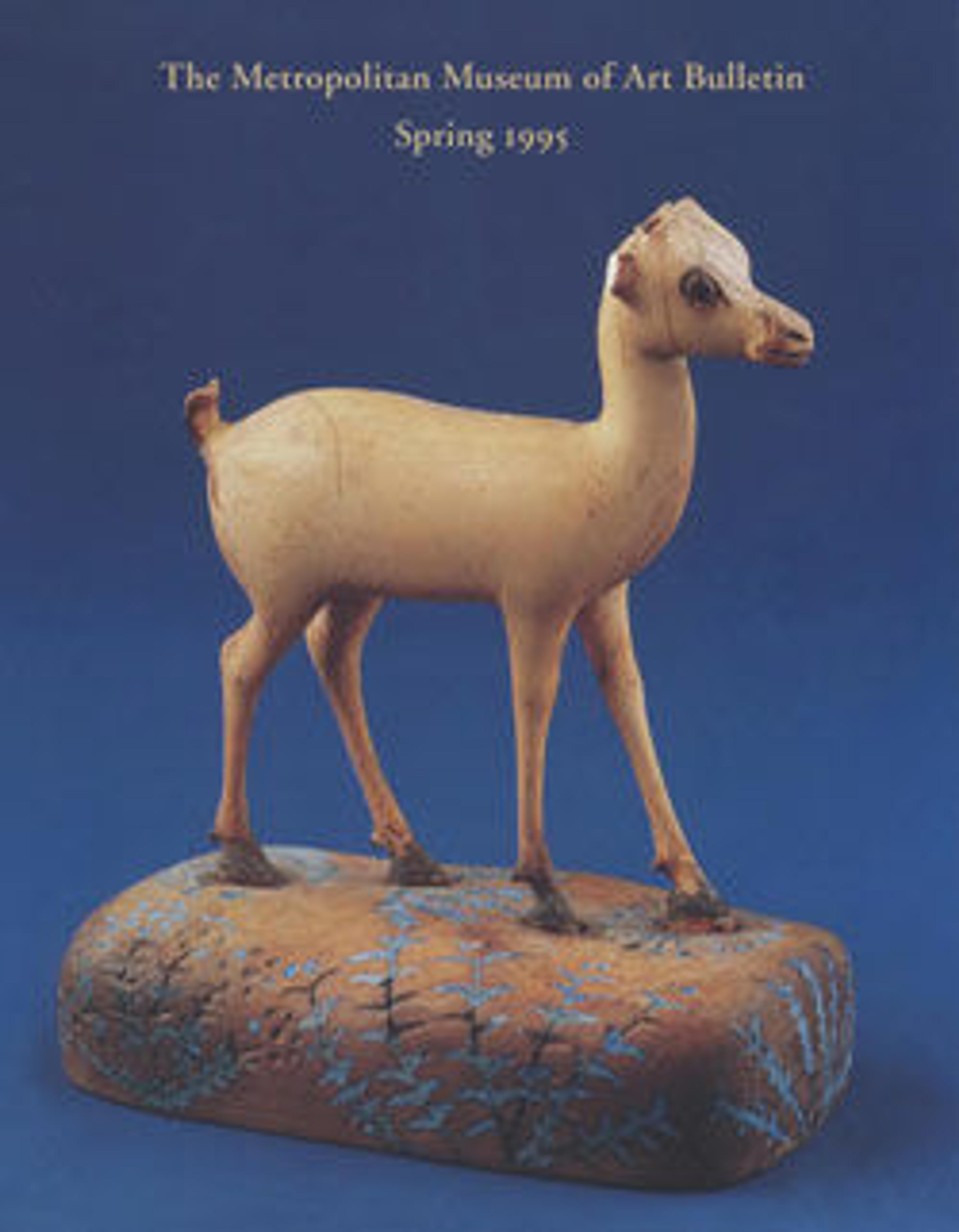Ibex
This ibex lifts its head proudly on an upright neck. Both forelegs are bent backward and the body rests gracefully on the left haunch. Despite the small size of the figure, the artist has conveyed the uneven weight distribution with remarkable accuracy. The animal's body is curved, and the left hindleg has disappeared under the haunch. This pose was used for the large ram sculptures that King Amenhotep III dedicated to the god Amun-Re at his temple of Soleb, Upper Nubia. The strong influence such large sculptures exerted on the minor arts is reflected in the small figures of this ibex.
This piece has two vertical holes in the bottom and two horizontal holes in the front and rear. It may have decorated an elaborate perfume vessel, in which case it would have been attached by pegs or tubes protruding from the underside and by pieces of wire securing it front and back.
This piece has two vertical holes in the bottom and two horizontal holes in the front and rear. It may have decorated an elaborate perfume vessel, in which case it would have been attached by pegs or tubes protruding from the underside and by pieces of wire securing it front and back.
Artwork Details
- Title: Ibex
- Period: New Kingdom
- Dynasty: Dynasty 18
- Reign: reign of Amenhotep III
- Date: ca. 1390–1352 B.C.
- Geography: From Egypt, Upper Egypt, Thebes
- Medium: Mottled semi-translucent quartz
- Dimensions: h. 2.3 cm (7/8 in); l. 2.6 cm (1 in); d. 1 cm (3/8 in)
- Credit Line: Purchase, Vaughn Foundation Gift, by exchange, 1980
- Object Number: 1980.2
- Curatorial Department: Egyptian Art
More Artwork
Research Resources
The Met provides unparalleled resources for research and welcomes an international community of students and scholars. The Met's Open Access API is where creators and researchers can connect to the The Met collection. Open Access data and public domain images are available for unrestricted commercial and noncommercial use without permission or fee.
To request images under copyright and other restrictions, please use this Image Request form.
Feedback
We continue to research and examine historical and cultural context for objects in The Met collection. If you have comments or questions about this object record, please contact us using the form below. The Museum looks forward to receiving your comments.
